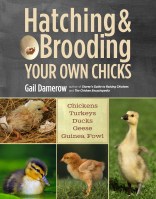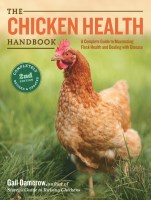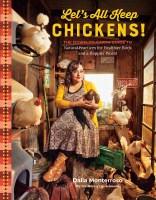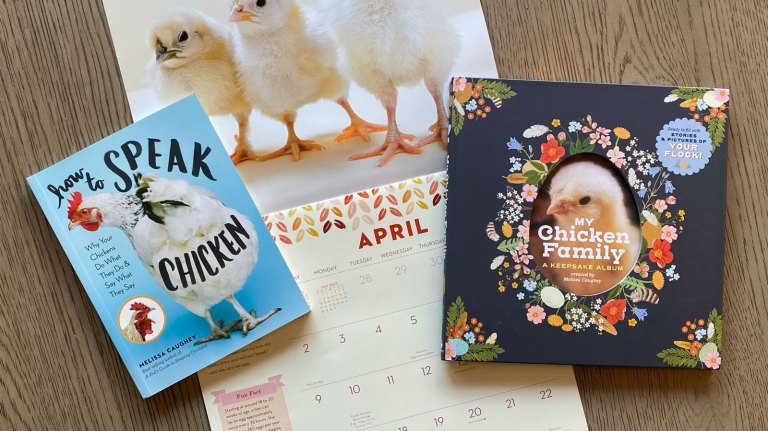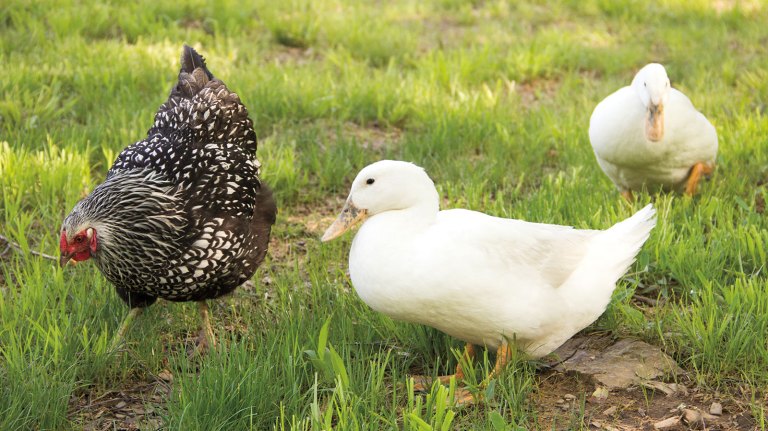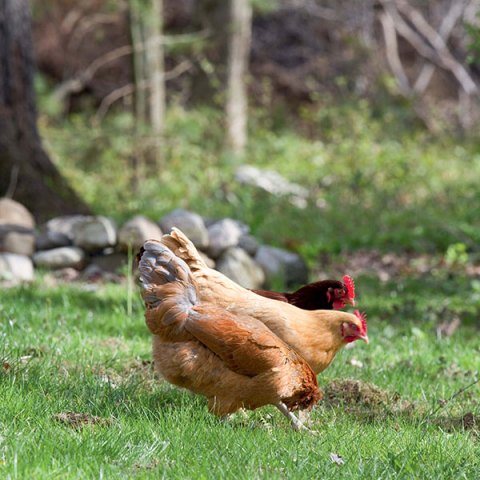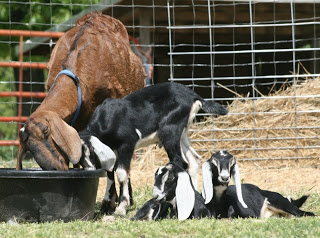Chick Care: Feeding and Watering Dos and Don’ts
Newly hatched chicks are not entirely helpless, but like any other babies, they must have access to clean water and be kept well-fed. Gail Damerow shares some expert tips to ensure you’re ready for your new arrivals.
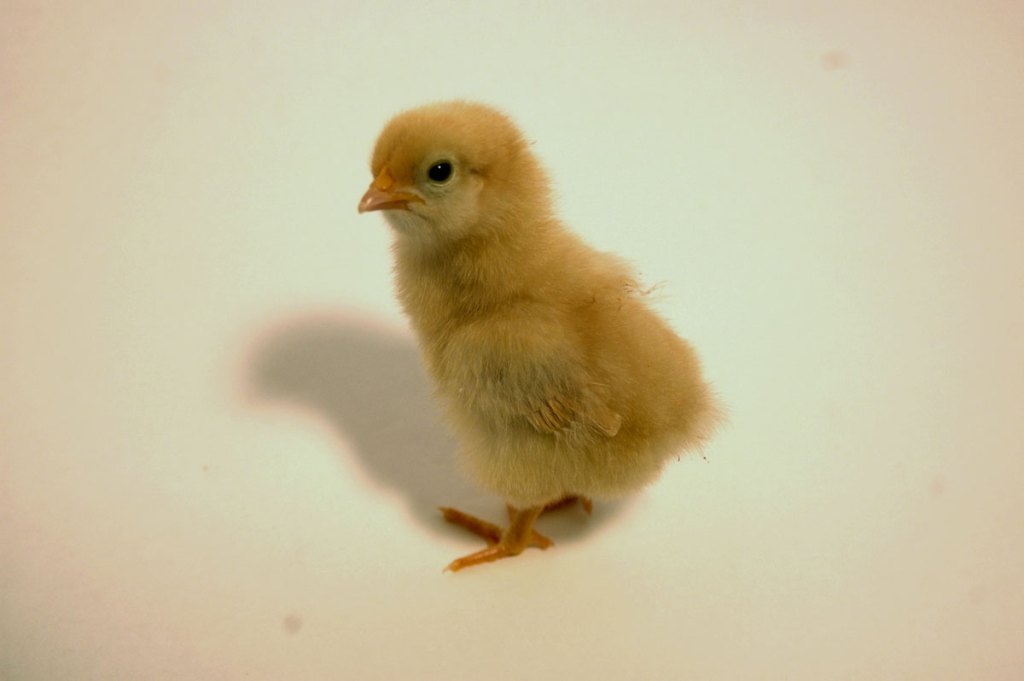
Newly hatched chicks are not entirely helpless, but until they grow a full complement of feathers, you’ll need to keep them warm, dry, and safe. Like any other babies, they must also be kept clean and well-fed. Here are a few dos and don’ts for making sure you’re meeting your new arrivals’ food and water needs.
DO make sure chicks must have access to fresh, clean water at all times. A waterer should be the correct size for your flock’s size and age — chicks should neither use up the available water quickly nor be able to tip over the fount. The basin should be high enough to keep the water level between a chick’s eye and the height of its back. This way, a chick drinks more and spills less. Chicks shouldn’t be able to roost over or step in the water. The easiest way to provide water to newly hatched chicks is to use a 1-quart (1 L) canning jar fitted with a metal or plastic watering base, available from most feed stores and poultry-supply catalogs.
DON’T be tempted to cut corners and provide water in an open dish or saucer. Chicks will walk in it, tracking litter and droppings that spread disease. They’ll tend to get wet and chilled, and the stress will open the way to disease. Some chicks may drown. Damp conditions in a brooder — whether caused by spilled water or a leaky waterer — are to be avoided.
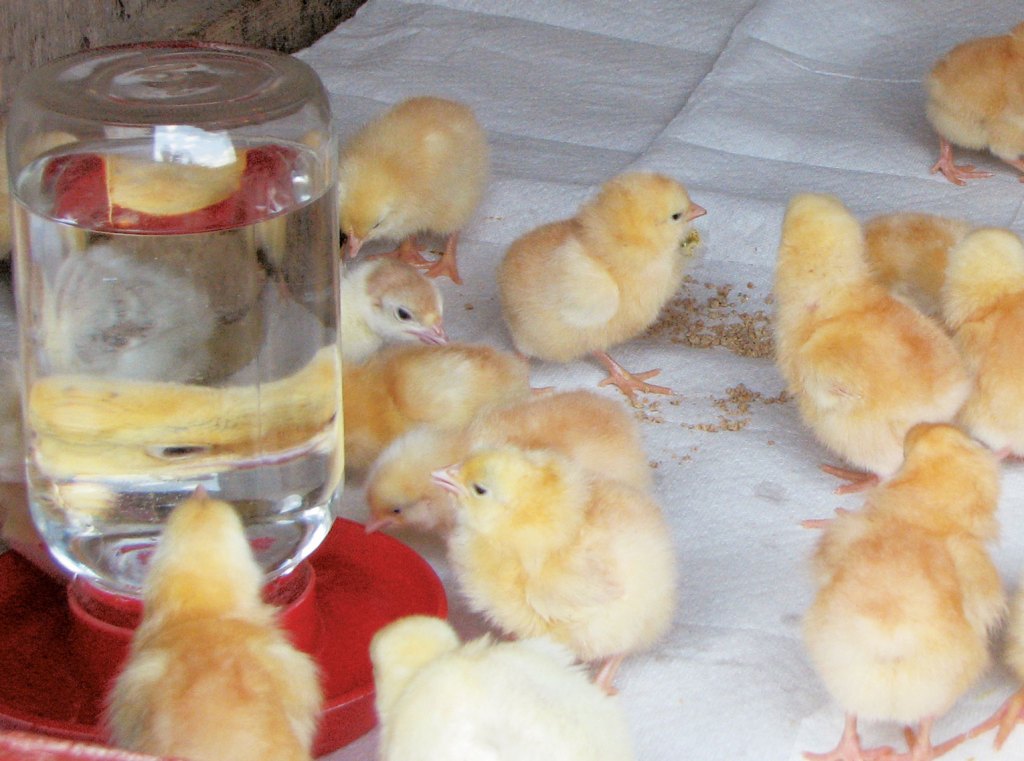
DO clean waterers daily. Use warm water and vinegar or other poultry-approved sanitizer. When choosing a waterer for your chicks, make sure to select one with a drinker that is easy to clean. A fount that’s hard to clean won’t be sanitized as often as it should be.
DON’T make chicks travel far for their water. Initially, place drinkers no more than 24 inches (60 cm) from the chicks’ heat source. Later, as you move the chicks to expanded housing, make sure they never have to travel more than 10 feet (3m) to get a drink. When upgrading to a larger waterer, DO leave old waterers in place for a few days — at least until the chicks get used to drinking from the new source.
DO make sure chicks are drinking before they start eating. They seem to experience less of a problem with sticky bottoms if they a good dose of water before they get a belly full of feed, especially when the feed is commercially formulated chick starter.
DON’T feed layer ration to chicks, not even as an emergency measure if you run out of starter. The high calcium content of layer ration can seriously damage a chick’s kidneys. If you run out of starter, or you forget to pick some up and you have chicks to feed, you can make an emergency starter ration by cracking scratch grains in the blender or, if you have no scratch, by running a little uncooked oatmeal through the blender and mixing it 50/50 with cornmeal. Don’t use this mixture any longer than necessary, though — grains are high in calories and low in the protein, vitamins, and minerals a chick needs for good growth and health.
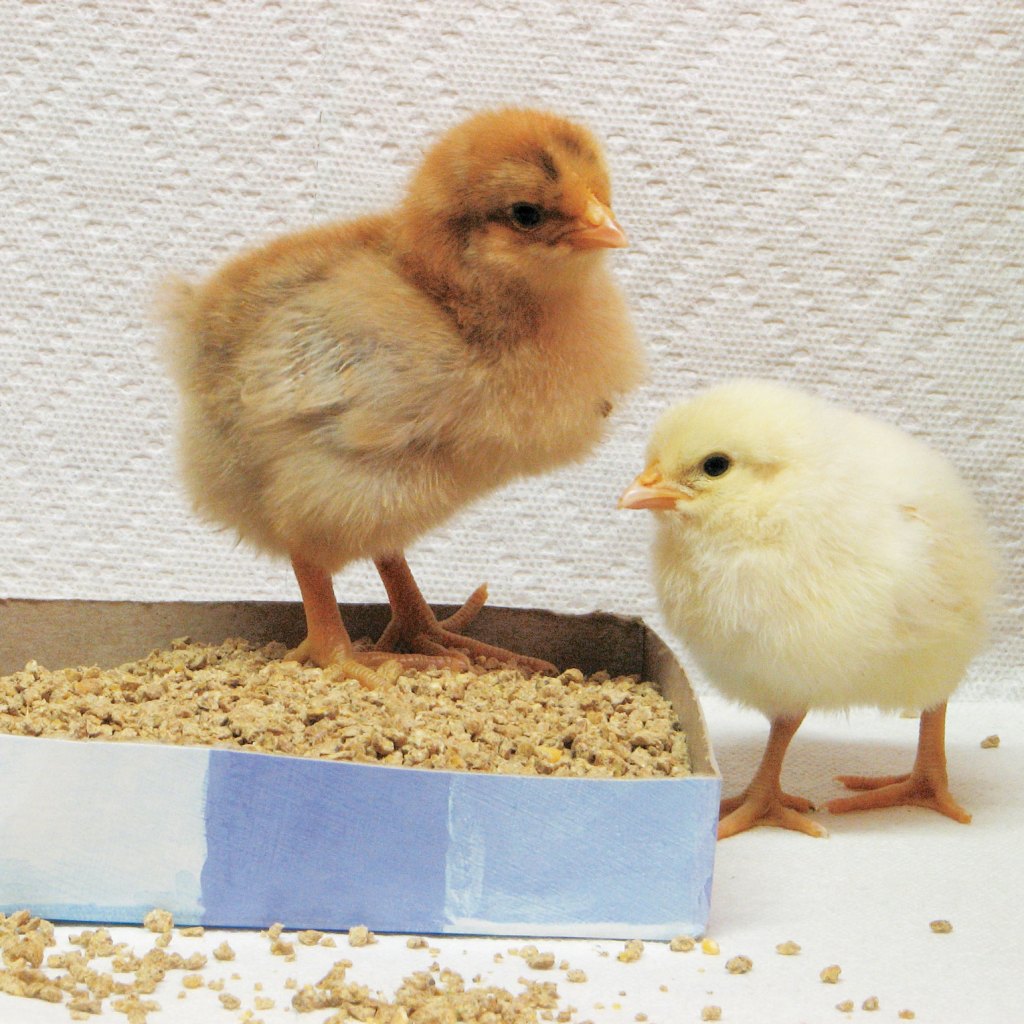
Soon after they hatch, chicks start looking for things to peck on the ground. If they don’t see anything else on the ground, they’ll peck their own feet.
DO sprinkle a little starter ration on a paper towel or paper plate to help them find feed. As soon as most chicks are pecking freely, remove the feed-covered paper before it starts to hold moisture that attracts mold. For the remainder of the first week, put the starter in a shallow lid or tray, such as a shoebox lid. When the chicks start scratching out the feed, switch to a regular chick feeder.
DO choose a feeder that works for your space. A good feeder prevents chicks from roosting over or scratching in feed and has a lip to prevent billing out (wasting feed by scratching it out with their beaks). If your space is limited, use a feeder that has a small footprint. One such style is a base, similar to a drinker base, that screws onto a feed-filled quart (1 L) jar, and has little openings through which the chicks can peck. If the brooder is roomy enough, a hanging feeder is ideal because it holds a lot of feed, so chicks are less likely to run out during the day; it minimizes feed wastage because chicks can’t scratch in it and are less likely to bill out feed if the feeder is maintained at the proper height (the same height as the birds’ backs).; and it is easy to raise on the hanger to the proper height as the chicks grow.
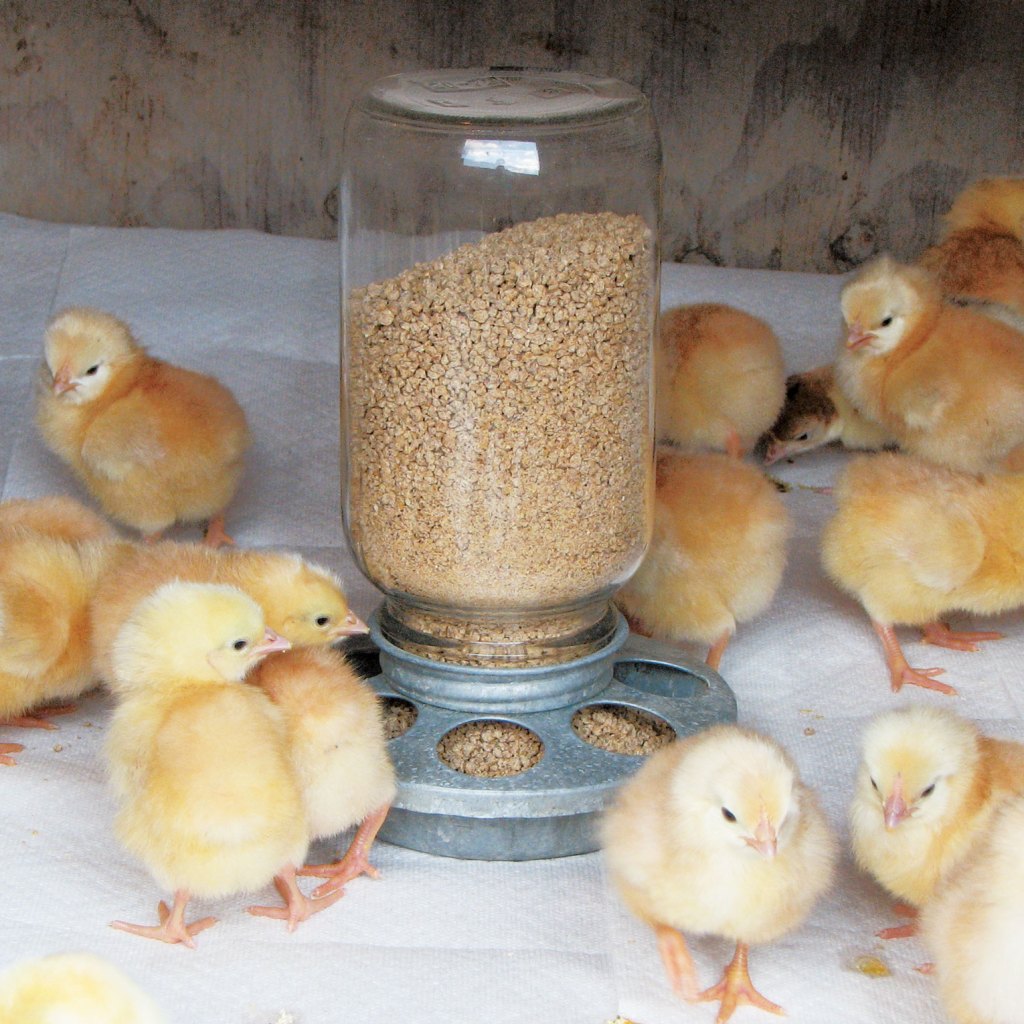
DON’T leave feeders empty for too long, and be careful not to let uneaten feed accumulate. Fill feeders in the morning, and let the chicks empty them before filling them again. Leaving feeders empty for long periods of time invites picking, but letting stale or dirty feed accumulate is unhealthful, so strike a healthy balance. Clean and scrub feeders at least once a week.
DO think about good gut health! Old-time poultry keepers spiked their chicks’ water with a tablespoon of apple cider vinegar per gallon (3.75 L). Chickens like it, and the poultry keepers saw positive effects. Could they have known that the beneficial bacteria and yeasts naturally colonizing a chick’s intestines prefer acidic conditions? I doubt it. The science of probiotics is all pretty new. But we know now some reasons why it was/is beneficial. Encouraging the growth of beneficial gut flora fends off harmful organisms through a process called competitive exclusion. Chicks raised in an incubator acquire beneficial gut flora more slowly than chicks raised under a hen. To enhance their immunity, probiotics are available that are either dissolved in water or sprinkled on feed to give the chicks an early dose of the same gut flora that will eventually colonize their intestines. A hand substitute is live-culture yogurt, but a little goes a long way — giving chicks too much yogurt will cause diarrhea.
Excerpted from Storey’s Guide to Raising Chickens, 4th Edition © Gail Damerow


